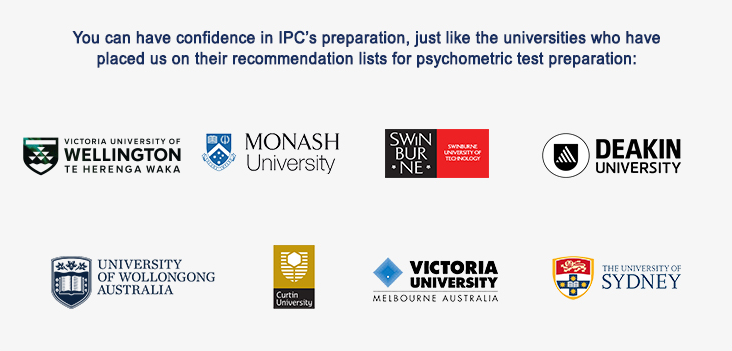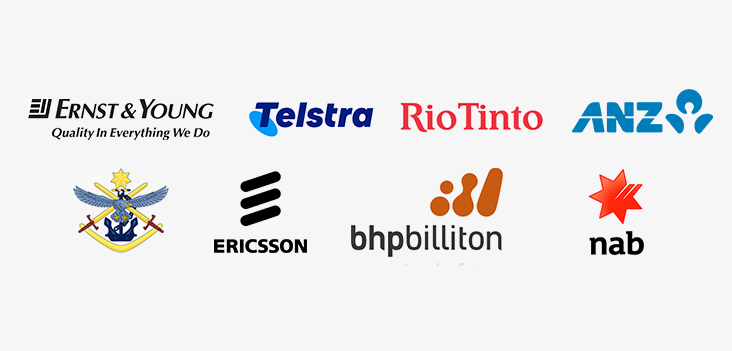Preparing for a group and individual assessment centre exercises
What is measured in a group and individual assessment centre exercises?
- Your ability to influence others.
- Your level of involvement in performing a group task.
- Your communication style - are you kind, aggressive, dominant, controlling, accommodating, listening when interacting with others?
- The quality of your contribution to the team.
How are you measured in a group or individual exercise?
Your individual and others style of interaction during the entire group activity are observed and assessed by qualified observers who are typically psychologists or people with special qualifications.
The group activity is used as an opportunity to measure your ability to work and interact with others such as your communication skills, listening skills, influencing skills, negotiating skills, social confidence, ability to encourage others, decision making skills.
The actual group activity has little importance to the measurement of your skills. It is merely used as a background or a trigger to create a group interaction between you and other participants.
What are good qualities to demonstrate?
If you are capable of influencing others in a group activity, show capability to listen to others, contribute to the group effort and offer constructive ideas you are likely to be tagged as a suitable candidate for managerial roles.
If you demonstrate good social skills, you are considerate but you are lacking decisiveness and ability to influence others then you are likely to be tagged as a less suitable candidate for a managerial role but might be suitable for positions that require team work or cooperation with others and less managerial substance.
If you demonstrate a dominant behaviour by taking control over the activity, you don’t listen to others, you don’t encourage others’ contribution and are less considerate to others then you are less likely to be suitable for a position that requires team work.
Is the quality of the group outcome important?
One of the common mistakes is to assume that an assessment centre measures the team’s behaviour and outcome. In other words, has the team achieved its goals or objectives. However, the observation is not focused on the outcome. It is only focused on measuring your behaviour in the team. The atmosphere in the team and the quality of its outcome have no impact in a group assessment.
What are the challenges of a group activity?
An unknown group activity and the need to manage group dynamics are factors that often lead participants to an excessive sense of stress. This type of test is especially more difficult and challenging for people who are more introverted and less socially confident.
Most of us need some time to adjust and feel comfortable and confident in a new situation and new people. Some of us need more time to get comfortable and others need less. However, a group activity exercise offers us no time to adjust but requires you to respond immediately to a problem which is presented to the group members. People’s response to such a situation can be very different:
- Some become quiet and close up.
- Some become aggressive and dominant.
- Some feel very comfortable almost like a fish in the water.
Becoming quiet and closed up
This style of negative communication in a group activity is typically characterised by the following behaviours:
- Sitting quietly through the activity, as you feel scared to take part.
- Sitting and watching others take control.
- Rarely (if the group is fairly quiet) trying to express your view but this is done in a low and hesitant voice so it gets little attention from the group.
Aggressive and dominant behaviour
This style of negative communication in a group activity is typically characterised by the following behaviours:
- Over need to take control over group activity.
- Excessive involvement and need to influence every decision.
- A tendency to dictate to others what to do.
- A lack of interest to listen to others or encourage others to express their opinion.
Feeling socially comfortable
This positive style of communication in a group activity is typically characterised by the following behaviours:
- An interest to listen to others’ opinions.
- An ability to persuade others in a kind and friendly way.
- A friendly demeanour when interacting with others such as smiling, approaching people by their names and showing positiveness.
The phases of a group activity:
Phase 1 – Opening phase
In this phase you as well as the other participants are asked to come in to a room and sit down. None of the participants know the others.
One of the observers will hand out a written case for you and the other participants to read. You will be given a certain number of minutes to read the page. It is important to note that sometimes the case information handed out to all participants is the same but sometimes it might be slightly different (some additional information might be provided to some participants).
Important strategies for this phase
In this phase you, as well as other participants, are likely to feel some stress and embarrassment from the fact that you are sitting with unknown people. To avoid demonstrating a negative style of behaviour and to come yourself down it is important to do the following:
- Be familiar with what ahead of you.
- Be patient to the situation and others.
- Take initiatives to break the ice.
- Suggest effective ideas that can help the group to come out of the ambiguous situation and move forward.
Some opening lines can be:
- ‘I would suggest that we first introduce ourselves. This way we can get to know each other’
- ‘I suggest that we start by reviewing all information everyone received to ensure that we have all the information’.
What not to do in phase 1:
- Avoid discussing sensitive topics in the group.
- Avoid jumping in to dictate to others what they should do.
- You don’t have to be the first person who begins talking. If someone else already started then don’t get angry or disappointed. Find another opportunity to express ideas that can promote and move the group forward.
Phase 2 – Performing the task
In this phase you and the other participants will be asked to work to complete the task mentioned in the case. To avoid demonstrating a negative style of behaviour it is important to do the following:
- Communicate confidence in your body language.
- Approach other participants by the name to create a personal connection.
- Use a confident, not too load and not too soft tone of voice.
- Sit straight and confident in your chair.
- Listen to what everyone in the group says and always think about ideas to move the group forward.
- When expressing your ideas include a short logical explanation about why is your idea good.
- Try to connect your ideas to others’ input.
- Be patient with others even if you think that their ideas are impractical.
Some lines you can use:
- ‘I suggest that we list on the board all the ideas and then take a vote because…
- ‘Let’s plan our time given that we only have 30 minutes. I suggest that in the first 10 minutes we discuss the problem, next 10 minutes we list all possible solutions, next 10 minutes we discuss pros and cons of each solution, then last 10 minutes we vote.’
What not to do in phase 2:
- Don’t be hesitant in your voice and appearance.
- Don’t be dominant.
- Don’t become angry if your idea was not heard or accepted just find another right opportunity to express another new idea to move the group forward.
Phase 3 – Conclusion and presentation
In this phase the observer will notify the group that the task time is over and you might be asked to present your outcome. To avoid demonstrating a negative style of behaviour it is important to do the following:
- When presenting the outcome – use a logical structure to present the information.
- Look at the observers, make eye contact and smile from time to time.
- Present all relevant assumptions you made when coming up with the outcome/solution.
- Stand in a confident and relaxed manner
- Use things available in the room such as a flipchart, whiteboard or papers to assist in explaining the outcome.
- Talk in a confidence voice.
- Inform your listeners when you wish questions to be asked – you can either allow questions to be asked during your presentation or only at the end. There is no right or wrong here. Chose what you are more comfortable with.
- Listen to questions and answer in a short and concise manner.
- Thank all the members and give them credit for their contribution at the end of the presentation.
What not to do in phase 3:
- Don’t hold hands in your pocket.
- Don’t look at the floor or one point when presenting the outcome.
- Don’t be impatient with questions.
- If you found that you made a mistake don’t try to cover it up but just admit and suggest how the outcome might change taking the mistake into consideration.
- Don’t forget to thank everyone at the end of the presentation.









